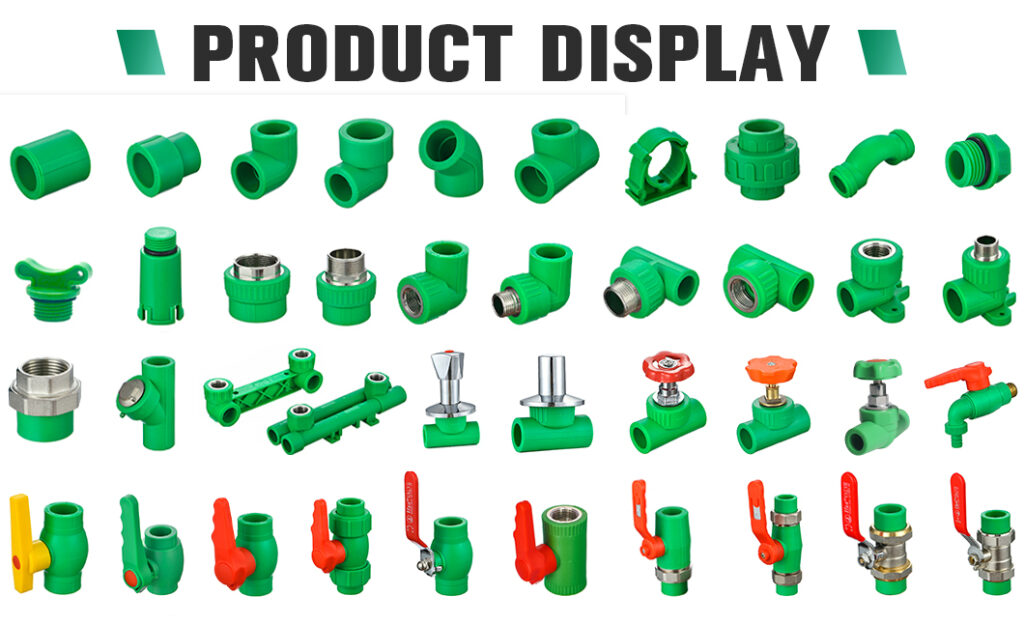Introduction
In the world of plumbing and piping systems, PPR (Polypropylene Random Copolymer) pipe fittings have gained immense popularity due to their versatility, durability, and ease of installation. These fittings play a vital role in various industries and have significantly improved plumbing systems worldwide. In this comprehensive guide, we will delve into the different types of PPR pipe fittings and their applications across various industries.IFAN factory 30+ years manufacture experience support color /size customization support free sample.Welcome to consult for catalog and free samples.This is our Facebook Website:www.facebook.com.
Understanding PPR Pipe Fittings
Before we dive into the various types and applications of PPR pipe fittings, it’s crucial to understand what PPR is and what makes it an ideal choice for piping systems.
PPR, short for Polypropylene Random Copolymer, is a type of thermoplastic that is highly resistant to temperature and pressure. It is known for its exceptional durability, chemical resistance, and non-toxic properties. PPR pipe fittings are made from this material, making them an excellent choice for a wide range of applications.
Types of PPR Pipe Fittings
2.1. PPR Couplings
PPR couplings are essential components used to connect two pipes or pipe sections. They come in various sizes and are available in both socket and threaded versions. These fittings are used in domestic and industrial plumbing systems for joining pipes securely.
2.2. PPR Elbows
PPR elbows are designed to change the direction of the pipe’s flow. They come in different angles, typically 45 and 90 degrees, making it easy to navigate through complex plumbing layouts. PPR elbows are widely used in plumbing and HVAC systems.
2.3. PPR Tees
PPR tees are used to create branch connections in plumbing systems. They are available in various sizes and configurations, such as equal tees, reducing tees, and lateral tees. These fittings are commonly employed in residential and commercial plumbing.
2.4. PPR Reducers
PPR reducers are used to connect pipes of different sizes, ensuring a smooth transition of fluid flow. These are vital in situations where a change in pipe diameter is required, maintaining efficiency in the plumbing system.
2.5. PPR Caps
PPR caps are used to close off the end of a pipe. They provide a secure seal, preventing leaks and contamination. PPR caps are used in various industries, including water treatment, chemical processing, and more.
2.6. PPR Flanges
PPR flanges are used to connect pipes to valves, pumps, or other equipment. They are essential in industrial applications and help create a secure and leak-proof connection.

Applications of PPR Pipe Fittings
3.1. Residential Plumbing
PPR pipe fittings are widely used in residential plumbing systems for hot and cold water distribution. Their ease of installation, resistance to corrosion, and long-term durability make them a preferred choice for homeowners and builders.
3.2. Commercial Plumbing
In commercial buildings, PPR pipe fittings are used to ensure efficient water supply and distribution. These fittings are suitable for hotels, hospitals, office complexes, and other commercial structures where reliability is critical.
3.3. HVAC Systems
Heating, ventilation, and air conditioning (HVAC) systems rely on PPR pipe fittings to transport hot and cold fluids efficiently. The temperature-resistant nature of PPR ensures that these fittings are ideal for HVAC applications.
3.4. Industrial Applications
PPR pipe fittings play a crucial role in various industrial applications. They are used in chemical processing, water treatment plants, and manufacturing facilities. The chemical resistance of PPR makes it a safe choice for transporting various fluids and chemicals.
3.5. Agriculture
Agricultural irrigation systems utilize PPR pipe fittings to ensure the efficient distribution of water. PPR’s resistance to UV radiation and environmental factors makes it ideal for outdoor use in farming and agriculture.
3.6. Infrastructure and Construction
Large-scale infrastructure and construction projects, such as water supply networks, wastewater systems, and stormwater management, rely on PPR pipe fittings for their durability and longevity.
3.7. Marine and Shipbuilding
PPR pipe fittings find applications in marine and shipbuilding industries. Their resistance to saltwater and harsh environmental conditions makes them a preferred choice for maritime systems.
Advantages of PPR Pipe Fittings
4.1. Durability
PPR pipe fittings have a long service life and are resistant to corrosion and rust, ensuring reliable performance over time.
4.2. Easy Installation
The lightweight and easy-to-handle nature of PPR pipe fittings simplifies installation, reducing labor costs and installation time.
4.3. Chemical Resistance
PPR is resistant to a wide range of chemicals, making it suitable for various industrial applications.
4.4. Non-toxic
PPR is a non-toxic material, ensuring that the water or fluid transported through these fittings remains safe for consumption.
4.5. Thermal Insulation
PPR pipe fittings offer excellent thermal insulation, helping to maintain the temperature of the fluids being transported.
Conclusion
PPR pipe fittings have revolutionized plumbing and piping systems across multiple industries. Their diverse types and applications demonstrate the versatility and reliability of these fittings. Whether in residential, commercial, industrial, or agricultural settings, PPR pipe fittings continue to be a preferred choice due to their durability, ease of installation, and resistance to various environmental factors. As technology and materials continue to advance, PPR pipe fittings are poised to play an even more significant role in the future of plumbing and fluid transport systems.

